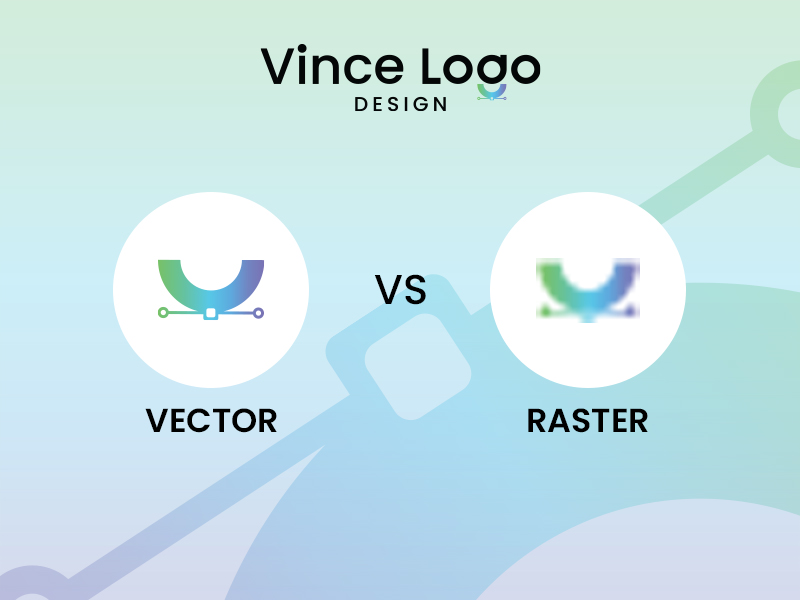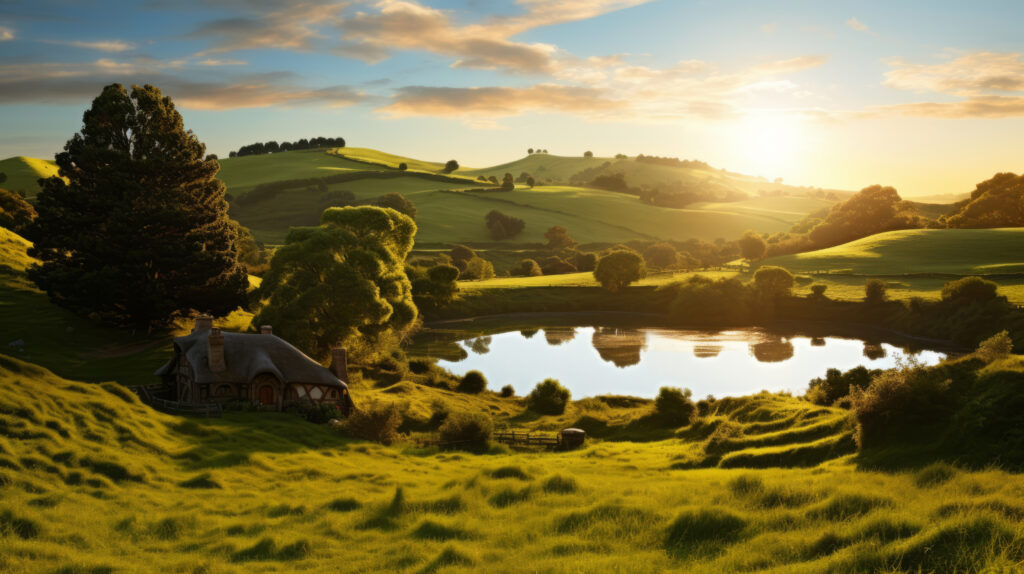
Have you ever been tangled up in digital graphics, trying to wrap your head around the difference between vector and raster images?
Raster images are composed of pixels, forming detailed visuals like photographs. In contrast, vector images are defined by mathematical formulas, offering infinite scalability without loss of quality.
Whether you’re a seasoned graphic designer, a budding artist, or just someone interested in how digital images are crafted, understanding the difference between these two types of graphics is crucial.
Let’s break down vector vs. raster and explore when and why you might choose one over the other.
What Are Vector and Raster Graphics?
To kick things off, let’s define our terms. Raster graphics, also known as bitmap images, comprise pixels – tiny squares of color that come together to form a complete image.
Think of them like a mosaic: each pixel is a single tile, and their arrangement and color define the image. Popular raster file formats include JPEG, PNG, and GIF.
On the other hand, vector graphics are not based on pixels but on paths defined by mathematical formulas.
These paths can be lines, shapes, or curves filled with color. Because they’re based on equations, vector images can be resized infinitely without losing quality, making them ideal for logos and other designs that need to be used at various sizes.
Standard vector formats include SVG, EPS, and AI.
A Brief Comparison of Raster Graphics vs. Vector Graphics
| Aspect | Raster Graphics | Vector Graphics |
| Resolution | Fixed; loses quality when scaled | Scalable without loss of quality |
| File Size | Larger, especially at higher resolutions | Generally smaller, depending on the complexity |
| Editing | Easy to edit and manipulate details | Editing can be less intuitive, not for complex images |
| Best Uses | Photography, detailed artwork | Logos, illustrations, engravings |
| Software Compatibility | Widely supported | Requires specific software like Illustrator |
Raster vs. Vector: What’s the Key Difference
Now that we’ve laid the groundwork let’s dive into the key differences between raster and vector graphics:
1. Scalability: One of the significant advantages of vector graphics is their scalability.
Whether resizing a logo for a business card or blowing it up for a billboard, vector graphics maintain crispness and clarity at any size.
Raster graphics, on the other hand, can lose quality and become pixelated when scaled up.
2. Complexity: Vector graphics create clean, precise lines and shapes, making them ideal for logos, icons, and typography.
Raster graphics are better suited for images with complex details and color variations, such as photographs or digital paintings.
3. File Size: Vector graphics typically have smaller file sizes than raster graphics, making them more efficient for web and digital use.
Raster images, especially high-resolution ones, can be hefty in file size, impacting loading times and storage space.
However, the ideal size of a logo depends on the platform you’re accessing.
Vector vs Raster: Dive Deeper Into the Graphics
The primary difference between raster and vector graphics lies in their core structure. Raster graphics excel in depicting complex, detailed images like photographs with subtle gradations of color and texture.
However, if you zoom in too much, you’ll start seeing the individual pixels, making the image look blurry or pixelated.
Vector graphics remain crisp and clear regardless of how much you zoom in or resize them. They are perfect for illustrations, logos, and any graphic that requires scalability.
For example, a company’s logo is typically created as a vector to ensure that it looks sharp on a business card, a billboard, or anything in between.
Let’s take a look at more examples of raster vs vector.
Examples Speak Louder Than Words: Raster Art vs. Vector Art
To drive home the differences between raster and vector graphics, let’s take a look at some examples:

Raster Art: Imagine a breathtaking landscape photograph, with every blade of grass and ray of sunlight captured in stunning detail. That’s the beauty of raster art—it’s all about preserving the intricate textures and nuances of the real world.
Vector Art: Now, picture a sleek, minimalist logo that looks just as sharp on a business card as on a billboard. That’s the magic of vector art—clean lines, bold shapes, and infinite scalability.
Why Do We Use Raster Graphics?
You might wonder, “What’s the advantage of using raster graphics if vectors seem so versatile?”
Well, raster graphics have their own set of strengths, particularly when it comes to capturing detailed imagery. Photographs, for example, rely on the subtle nuances of color and shading that raster graphics excel at reproducing.
When Should You Use Raster or Vector Graphics?
Here are some critical points on when to use raster versus vector graphics:
Raster Graphics
1. Best for Digital Photos: Ideal for handling complex color gradients and details found in photographs.
2. Print Materials: Suitable for printed items requiring fine detail, such as flyers and posters.
3. Detail-rich Images: Excellent for images that require a high level of detail and subtle variations in color and texture.
Vector Graphics
1. Digital Illustrations and Complex Graphics: Ideal for artworks that require scaling, such as logos and icons.
2. Scalable Projects: Vector graphics can be resized without losing quality, making them perfect for graphics that must work at multiple sizes.
3. Solid Colors and Simple Shapes: Best for designs that use transparent, solid colors and simple, defined shapes, such as infographics and typography.
In Conclusion: Finding the Right Fit
In the battle of vector vs. raster, there’s no clear winner—each has its own strengths and weaknesses.
Whether you’re creating a stunning logo, retouching a photograph, or crafting intricate illustrations, understanding the differences between raster and vector graphics is critical to achieving your desired results.
So, the next time you embark on a creative endeavor, consider the nature of your project, the level of detail required, and the intended use of your graphics.
Ready to elevate your brand with a stunning logo? Let’s collaborate with Vince Logo Design today and bring your vision to life!
Uncover More Information:

Vince Logo Design is a distinguished digital marketing agency, specializing in crafting compelling brand identities and optimizing online presence. We are your partners in creating impactful digital strategies that drive results.
Get in touch.Articles
- Top 10 SEO Benefits of Responsive Web Design in 2025
- 8 Best CMS for Small Business in 2025: Pick the Popular
- 5 Best Hosting for Small Business Websites
- Affordable WordPress Website Design: Best Service Provider
- Custom Design Vs Template Website: Which One Is Best?
- Fix My WordPress Site: WSOD, Redirect & Site Maintenance
Get Free Consultancy
Fill the following form and receive a guaranteed response within 48 hours.
We have worked with world's leading brands











